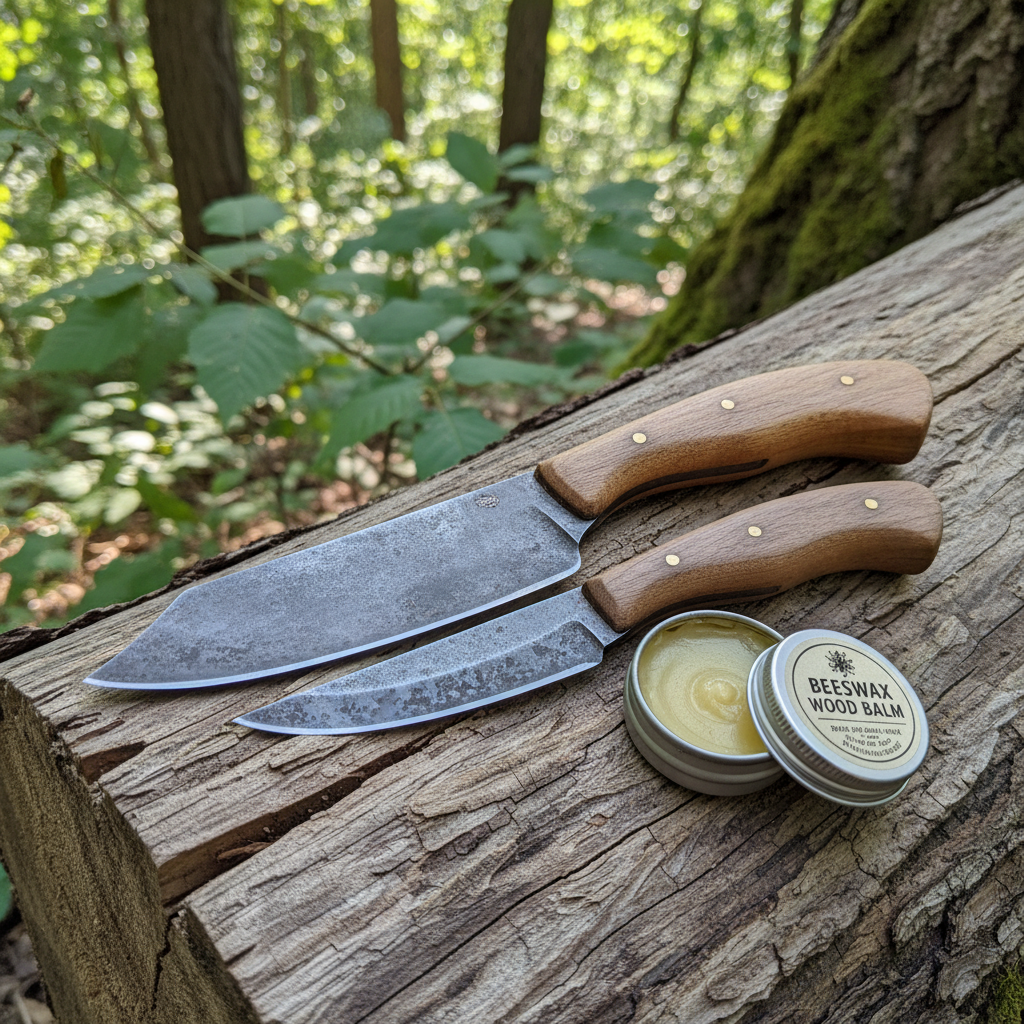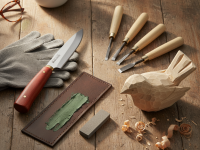There’s something uniquely satisfying about sitting outdoors, surrounded by nature, with a piece of wood in one hand and a sharp blade in the other. The gentle scrape of wood, the crisp air, the quiet focus – it’s therapy for the soul. If you’ve ever delved into the world of wood carving, especially out in the wild, you know that your tools are more than just instruments; they’re an extension of your creativity, your trusted partners. And when it comes to outdoor whittling, allow me to introduce you to a true game-changer: high carbon wood carving tools.
I’ve spent countless hours with various blades, from my backyard porch to serene forest clearings, shaping everything from simple figures to intricate designs. And through all these experiences, one type of steel consistently stands out for its performance and reliability in the great outdoors: high carbon steel. Forget the fancy gadgets; sometimes, the best solutions are the tried and true ones.
Why High Carbon Steel is Your Outdoor Whittling MVP
So, what makes high carbon steel so special for our outdoor adventures? Well, let me tell you from personal experience, it boils down to a few key properties that make a world of difference when you’re far from your workshop and electricity.
Unrivaled Edge Retention
This is probably the biggest reason I swear by high carbon tools. When you’re out in the woods, you don’t want to be constantly sharpening. High carbon steel holds an edge incredibly well. I’ve been able to work on a few projects over an afternoon with minimal stropping, sometimes none at all. The ability to just *keep cutting* without interruption allows you to stay in the zone, flowing with your piece rather than being pulled out of it by a dull blade. It’s the kind of reliability you truly appreciate when you’re relying on a single knife for your creative output.
Effortless Sharpening
While it holds an edge beautifully, even the best blade will eventually need a touch-up. And here’s where high carbon steel truly shines: it’s incredibly easy to sharpen. Even with a simple strop and some compound, you can bring that razor edge back in minutes. I’ve done it countless times by a campfire, or just leaning against a tree. Unlike some super-hard stainless steels that can be a real pain to hone, high carbon steel takes an edge almost eagerly. This ease of maintenance makes it ideal for outdoor use, where you might not have access to a full sharpening setup.
Exceptional Control and Feel
There’s a certain “feel” to high carbon steel that’s hard to describe but instantly recognizable to experienced carvers. The way it bites into the wood, the control it offers – it’s just superior. The fine grain structure of high carbon steel allows for incredibly thin, sharp edges that glide through wood, giving you precise control over every cut. This translates directly to cleaner cuts and less effort, which is a huge bonus when you’re whittling for hours.
Essential High Carbon Tools for Your Outdoor Kit
While the market is flooded with various carving tools, for outdoor whittling, simplicity and versatility are key. Here are the high carbon essentials I always make sure to pack:
The Humble Whittling Knife
- Sloyd Knife: This is my absolute workhorse. A good sloyd knife with a straight or slightly curved blade is incredibly versatile. It’s fantastic for roughing out shapes, making stop cuts, and even finer detail work. Look for one with a comfortable handle that fits your hand well – trust me, your hand will thank you after a long session. I’ve had one particular sloyd knife for years, and it’s been through thick and thin, literally.
- Detail Knife: For those intricate cuts, tiny figures, or delicate textures, a smaller detail knife is indispensable. Its finer point and shorter blade allow for precision work that a larger sloyd knife can’t quite manage. It’s often my second most-used tool, right after the sloyd.
The Versatile Hook Knife
If you’re into spoon carving or creating bowls and cups, a hook knife made from high carbon steel is a must-have. Its curved blade allows you to hollow out concave shapes with surprising ease. I remember once trying to carve a small kuksa (traditional Scandinavian drinking cup) by a river using only my straight knife – it was a nightmare! The hook knife changed the game completely, turning a frustrating task into a joyous one.
Safety First: Gloves and Thumb Guards
While not “tools” in the carving sense, safety gear is just as crucial, especially when you’re outdoors and potentially far from immediate medical attention. A good pair of cut-resistant gloves and a leather thumb guard will save you from painful nicks and deeper cuts. I’ve learned this lesson the hard way more times than I care to admit. Better safe than sorry, always.
Choosing Your High Carbon Companion
When you’re selecting high carbon tools for outdoor use, consider these points:
- Handle Comfort: This is paramount. A tool that feels good in your hand will prevent fatigue and blisters, letting you carve for longer. Wooden handles are traditional and often preferred for their natural feel.
- Blade Thickness and Grind: For whittling, you generally want a relatively thin blade with a good scandi or flat grind. This allows for deep cuts and clean removal of material without wedging.
- Reputable Brands: While I won’t name specific brands, look for those known for quality steel and craftsmanship. Reading reviews from other carvers can be incredibly helpful. You want tools that are built to last and perform reliably.
Mastering Maintenance: Keeping Your Blades Sharp & Rust-Free
Ah, the Achilles’ heel of high carbon steel: rust. Yes, it’s susceptible to corrosion, especially in damp outdoor environments. But don’t let that deter you! With a little care, you can keep your high carbon tools pristine and performing beautifully for years.
Clean After Every Use
This is non-negotiable. After each carving session, wipe your blade clean of any wood sap or moisture. A simple cloth will do. If you’ve been carving particularly sappy wood, a little rubbing alcohol can help clean the blade thoroughly.
Oil Your Blades Religiously
Before storing your tools, especially after outdoor use, apply a thin layer of oil to the blade. I personally use mineral oil (food safe, in case I’m carving utensils) or camellia oil. This creates a barrier against moisture and prevents rust. I always carry a small vial of oil in my outdoor carving kit, and I make it a ritual to oil my blades before packing them away.
Strop Regularly
As mentioned, high carbon steel loves to be stropped. A few passes on a leather strop loaded with polishing compound will keep your edge razor-sharp and dramatically extend the time between full sharpenings. It’s an easy habit to get into and makes a huge difference in cutting performance.
Store Properly
When you’re not using them, store your tools in a dry place. A leather tool roll or a canvas pouch works well for outdoor transport and storage, protecting the blades and keeping them from knocking against each other.
Embracing the Outdoor Whittling Experience
With your high carbon tools ready, the world truly becomes your oyster – or rather, your woodpile! I’ve found that outdoor whittling isn’t just about the finished product; it’s about the entire process:
- Finding Your Wood: Whether it’s fallen branches, a piece of firewood, or ethically sourced greenwood, the hunt for the perfect piece is part of the fun. Basswood, willow, birch, and even pine are great starting points.
- The Serenity: There’s a peace that comes with working iature. The sounds of birds, the rustle of leaves, the warmth of the sun – it all enhances the experience. It’s a mindful practice, a chance to discoect from the digital world and recoect with something tangible.
- Improvisation: Sometimes, the wood dictates the carve. A knot, a grain pattern, or a specific shape might inspire a completely different project than you initially plaed. High carbon tools, with their precise control, allow you to adapt and flow with these natural variations.
Conclusion
High carbon wood carving tools are more than just cutting implements; they are facilitators of an ancient, meditative craft. Their superior edge retention, ease of sharpening, and incredible feel make them the ideal choice for anyone looking to embrace the joy of outdoor whittling. Yes, they require a little love and care to prevent rust, but the performance they deliver makes that small effort completely worth it. So, grab a good high carbon knife, find yourself a quiet spot under the open sky, and let the magic of outdoor whittling unfold. Happy carving!




